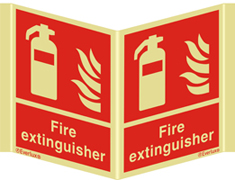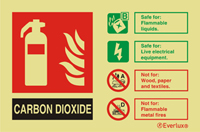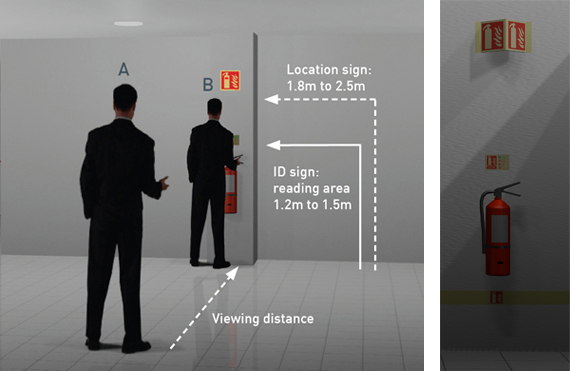BS 5306 pt. 8: 2012 and what it means with regard to signage
|
The amended Standard BS 5306 pt. 8: 2012: The selection and positioning of portable fire extinguishers - Code of practice has finally arrived and it introduces some important changes and new recommendations regarding the installation of fire extinguishers and associated signage. So in simple terms, what does this mean for the fire industry with regard to ensuring that extinguishers are installed and signed correctly? The Standard highlights the importance of a fire extinguisher being "readily seen” and that "the position and type of a fire extinguisher should be indicated on a sign”. It underpins The Regulatory Reform (Fire Safety) Order: 2005 which forms the basis of UK Fire Law and states: "Where necessary (whether due to the features of the premises, the activity carried on there, any hazard present or any other relevant circumstances) in order to safeguard the safety of relevant persons, the responsible person must ensure that a) the premises are, to the extent that it is appropriate, equipped with appropriate fire-fighting equipment and with fire detectors and alarms; and b) any non-automatic fire-fighting equipment so provided is easily accessible, simple to use and indicated by signs.”Part 2 Fire-fighting and fire detection (Section 13)" Furthermore, The Health & Safety (Safety Signs and Signals Regulations) Act: 1996 and the Health and Safety (Safety Signs and Signals Regulations - Northern Ireland) Act: 1996 also draw attention for the need to indicate the location of fire-fighting equipment An extinguisher can often be obstructed, hidden or moved due to any manner of differing circumstances (positioning of furniture, congregations of people, new decor, flowers, etc.) and may not be immediately apparent thereby preventing or blocking its effective use. In order to ensure clear and unambiguous identification of an extinguisher's location ISO 16069:2004 Graphical Symbols – Safety Signs – Safety Way Guidance Systems (SWGS) specifies that an extinguisher location sign should be positioned 1.8m – 2.0m from floor level. Further to this, the Standard BS ISO 7010: 2011 provides the criteria regarding the design and characteristics of the registered safety signs appropriate for the identification of an extinguisher's location. Examples of these signs can be found below and the new addition of a red panel on the extinguisher symbol should be noted |
 |
|
With regard to the installation of a complementary "ID” sign, the amended Standard BS 5306 pt. 8: 2012 requires that, if by means of a Risk Assessment, justified reasons or special requirements more than one fire extinguisher type is installed in a single storey of a building. "It is highly recommended that an Identification Sign (ID sign) is fixed/installed immediately above the fire extinguisher”. The "ID” sign is considered to be an additional sign that provides information regarding the type of fire extinguisher and the class of fire for which it is safe to use, including those involving electrical equipment (Section 5.4.2 Conductivity). It is particularly important that extinguishers intended to tackle Class B, Class D & Class F fires involving electrical equipment should be located in a manner that ensures that the correct extinguisher for that fire type is the first one encountered by any prospective operator. This recommendation is especially relevant when a prospective operator might not have received adequate training in the selection and use of extinguishers. It is also possible that, due to the alarming nature of the incident, a prospective operator who has received training could also make the incorrect choice of fire extinguisher when faced with a fire. |
 |
|
Additionally, the location and type of fire extinguisher should also be indicated by signage so that should it be removed from its location, this can be identified during a safety inspection and a suitable replacement ordered. Therefore in summary, the correct way to sign an extinguisher is to use a Fire Equipment location sign (located above the extinguisher) which is complemented by an additional "ID” sign as shown in the Figure below. |
 |
